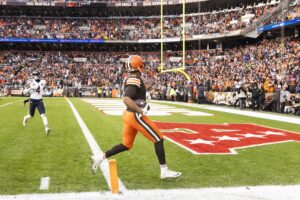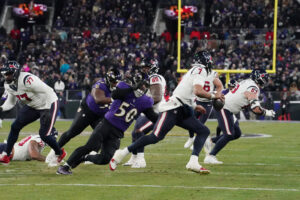Stadium Economics: Has Mark Davis Found a Financial Oasis in Las Vegas?
Is Las Vegas a financial oasis or just another desert mirage?
Las Vegas is a city that was built on a simple mantra. The house always wins. Maybe that is one of the reasons why Mark Davis wants to build a house for the Oakland Raiders there.
The huge difference between Las Vegas and any other potential NFL city is the public funding. On October 17th of last year, Governor Brian Sandoval signed SB-1 2016 into law. By doing so, Las Vegas went from a mirage to a tangible and financial oasis. The law created the Las Vegas Stadium Authority. And the law also created a .88% increase in the hotel tax, which the stadium authority will collect to pay off the bonds.
Should Mark Davis be approved by the NFL Owners to relocate to Las Vegas, it is the Stadium Authority’s responsibility to issue $750 million dollars worth of stadium bonds. As long as this money is on the table, Las Vegas will be a legitimate possibility for the Raiders. It is the five ton elephant in the room.
That is not the only issue when it comes to a possible stadium in Las Vegas.
The cost of a stadium in sin city could be as high as $1.8 Billion dollars. That includes 65,000+ seats, a dome, the land, parking, and direct infrastructure. Indirect infrastructure will be paid for out of a $900 million dollar Nevada DOT fund. That fund will cover the widening of the local freeways, ramps, monorail extension, footbridges, etc. In addition to the stadium the Raiders also need to build a $100 million dollar training facility.
Now Mark Davis has offered up $500 million towards this project. $300 million in cash, half of which is expected to come from Personal Seat Licences, and $200 million will from the NFL G4 loan program. Add to that the money the state has put up and it is $1.25 Billion dollars. That leaves up to a $650 million dollar shortfall or gap that needs to be bridged.
Before we get into covering the stadium shortfall, we need to look into the economics of the public contribution.
From pitch to ink, the Las Vegas Stadium, took less than six months to become the law of the land. During that time, and even still, many opponents of the project aired their concerns. Those arguments ranged from public education funding, corporate welfare, to negatively impacting the rest of the Las Vegas economy. Lets dig in.
Argument One: This tax is being paid by the tax payers of Nevada.
While this argument is not entirely untrue, it is not very accurate either. The tax burden will be paid by people who sleep in hotel rooms. A vast majority of those will be out of state tourists. Last year roughly 43 million people visited the Las Vegas metro area. Also keep in mind that those companies who are directly affected by raising this tax, the casinos, voted unanimously for this tax increase at the SNTIC meetings.
Argument Two: This tax money should be used for education.
The hotel tax was never originally intended to be used for anything other than increasing tourism to Las Vegas. That did include some transportation and infrastructure upgrades beyond the fuel tax, but this tax was never intended to support general government revenue directly. Indirectly is a different story. By increasing tourism, it spurs economic growth, which intern increases overall tax revenue. The stadium is expected to generate $35 million in recurring taxes for the state and county, $13.4 million of which will be used on education.
Argument Three: This project could negatively impact, IE poach revenue and jobs from other local businesses.
This idea stems from a belief that certain, agenda driven, economists have that the stadium will not increase the local economy, but instead will siphon from it. This is not exactly accurate though. The stadium is expected to generate 450 thousand more visitors and over 700 thousand additional room stays. Those visitors are expected to spend $620 million during their trip. This is not wishful thinking either. In Arlington Texas, since AT&T Stadium was built, hotel tax revenue has increased 68%. In 2015 tourists to Arlington accounted for 52% of the overall sales tax revenue. Their spending was $951.1 million and that translated to $76.1 million in taxes.
Argument Four: Corporate welfare, public money for a private project, and tax dollars for billionaires pockets.
Each year in the United States, governments spend roughly 50 Billion on subsidizing business. Some deals are good for the local economy and some are not. What is important is to analyze each situation on a case by case basis. In this situation, the local government leaders of the Las Vegas metro area have tried, and failed, to build a large event stadium over the last few years. Now there are a few reasons they need to build a large event venue.
First, the University of Nevada Las Vegas needs a larger stadium in its attempt to join a power five NCAA conference. Secondly, there is a segment of events every year that can only be hosted in a large venue. More events equals more visitors dollars being spent in Vegas. The State of Nevada needed a private partner to help build a large events stadium, because they did not want the tax payers to have to pay for all of it. Make no mistake, this is a public project. UNLV is a public entity and will be using this facility.
What the state needed was a private partner, or partners, willing to foot the majority of the cost. The only way to do that is to make it financially worth wild for that private entity. Now the merits of that can be debated for eternity. What is important in this situation is that it is a win for everyone involved. Based on the economic projections it should achieve that goal.
Argument Five: The tax paying citizens of Nevada could be on the hook for the bonds.
This argument is factually true. However it would take an economic slump and duration that has not been seen in the U.S. since the great depression for this to happen. The Stadium Authority is setting aside 2 full years of hotel tax collections to create a waterfall fund for just such a situation. And hotel occupancy would have drop below 60% for years before the general fund would be tapped.
Everything that went into creating and vetting the economics and revenue for the state is listed here. I would recommend seriously reading that if you have some of the concerns listed above.
With Sheldon Adelson no longer a part of this deal what happens now?
Up until last month, Sheldon Adelson was going to bridge that gap. Things don’t always go as planned though. Adelson broke off negotiations with the Raiders in a very public way. Not only that but Goldman Sachs “unofficially” cut bait and ran as well.
Because the state is investing so much into the stadium and surrounding infrastructure, it has made this project very enticing for private investment. The state also has less bureaucratic regulations, which makes it easier to build these types of projects. Lets look at this from a bank’s perspective.
Mark Davis has $1.25 Billion total to put into the project. That means a bank only has to finance up to $650 million. That is just over a third of the project. Stadium revenue is projected to be anywhere from $250-$350 million a year. Which makes the numbers add up when you are talking about paying up to $30-$35 million a year for 30 years.
There is no regional competition for large venue events. Sam Boyd Stadium, where UNLV currently plays, will be demolished. Also the stadium revenue is not being split with a partner or the state. The only gets its revenue from taxes. What this means from a banks perspective is that there will be more revenue available to get paid back.
There are potential drawbacks here as well. The banks will be paid from the Stadium Events Company solely. Its gross revenue will be anywhere from $125-$225 million a year. The low end after expenses could be around $40 million a year which is cutting it close.
Without Adelson the banks might need another billionaire backstop as well. Mark Davis is a billionaire when you count his ownership of the Raiders, but the NFL will not allow the team put up as collateral.
How does Mark Davis overcome these potential drawbacks?
Well Mark has flexibility sliding revenue into the Stadium Events Company. After all Mark will own that company. If the banks need additional guaranteed revenue, Mark could include Naming rights into that company, and other sponsorship revenue. Additionally Mark could increase what the Raiders pay to the Stadium Events Company. This extra guaranteed revenue flexibility is the kind of thing banks like to be reassured with.
As to that billionaire backstop. Well Mark has two of those in his pocket as owners of the Football First company that owns over 20% of the team. In fact, Paul Leff actually works for Mark with in the organization. Mr. Leff is considered one of the brightest minds when it comes to financial investments. You can safely bet that Mr. Leff is at the head of any negotiations with financial institutions.
Does all of this guarantee the Raiders will move to Las Vegas?
In the end no.
All this article is suggesting, is that Las Vegas is economically viable for Nevada, the NFL, and private investment. Especially when compared to Oakland here. I personally see all these factors being in the Raiders and NFL’s best interest to move the team to Las Vegas. But that does not make it so. The NFL stadium finance committee will weigh in, next week, on the new financing Mark has set up, and the next meeting for the Stadium Authority is March 9th.
For all this to be ready for an Owners vote at the spring meeting in Phoenix, these two meetings next week need to see locked down financials, and lease agreement. If not, the owners could very well punt the vote until May.






